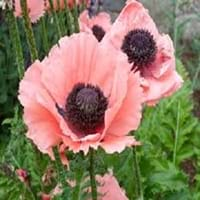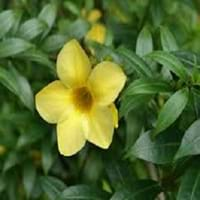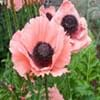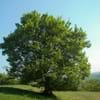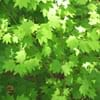Life Span
Perennial
Perennial
Type
Tender Perennial
Shrub
Origin
Western Asia
Hybrid origin
Types
Not Available
Allamanda voilacea
Allamanda violacea Cherry Jubilee
Allamanda x Alba (Blanca)
Allamanda Cream
Allamanda Chocolate
Allamanda Indonesia Sunset
Allamanda hendersonii
Number of Varieties
Not Available
Habitat
Lake margins, Lake Sides, Temperate Regions
gardens, Grassland, Roadsides, Tropical regions
USDA Hardiness Zone
3-9
10-14
Sunset Zone
A1, A2, A3, 1a, 1b, 2a, 2b, 3a, 3b, 4, 5, 6, 7, 8, 9, 10, 11, 14, 15, 16, 17, 18, 19, 20, 21
H1, H2, 24
Habit
Upright/Erect
Vining/Climbing
Flower Color
Light Pink
Salmon, Burgundy, Dark Salmon
Flower Color Modifier
Bicolor
Not Available
Fruit Color
Not Available
Light Green, Pink
Leaf Color in Spring
Green, Gray Green, Dark Green
Light Green
Leaf Color in Summer
Not Available
Light Green
Leaf Color in Fall
Green, Gray Green, Dark Green
Light Green
Leaf Color in Winter
Not Available
Light Green
Leaf Shape
Aristate
Bell Shaped
Plant Season
Spring, Summer
Spring, Fall, Winter
Sunlight
Full Sun, Partial Sun
Full Sun, Partial Sun
Growth Rate
Medium
Very Fast
The pH of Soil
Acidic, Neutral, Alkaline
Acidic, Neutral, Alkaline
Soil Drainage
Well drained
Well drained
Bloom Time
Late Spring, Early Summer
Indeterminate
Tolerances
Not Available
Drought, Salt
Where to Plant?
Container, Ground, Pot
Ground
How to Plant?
root cutting
Seedlings
Plant Maintenance
Medium
Medium
Watering Requirements
Keep the Soil well drained
Form a Soil ring to water efficiently, Keep the ground moist but not water-logged, Requires a lot of watering, Water when soil is dry
In Summer
Lots of watering
Lots of watering
In Spring
Moderate
Moderate
In Winter
Average Water
Average Water
Soil pH
Acidic, Neutral, Alkaline
Acidic, Neutral, Alkaline
Soil Drainage Capacity
Well drained
Well drained
Sun Exposure
Full Sun, Partial Sun
Full Sun, Partial Sun
Pruning
Cut away fading foliage, Prune after flowering, Remove damaged leaves, Remove dead branches, Remove dead leaves
Cut or pinch the stems, Prune for shortening long shoots, Prune if you want to improve plant shape, Prune in spring, Remove damaged leaves
Fertilizers
10-52-17 after germination, All-Purpose Liquid Fertilizer
All-Purpose Liquid Fertilizer
Pests and Diseases
Pests and diseases free, Red blotch
Red blotch
Plant Tolerance
Deer resistant, Drought
Drought
Flower Petal Number
Single
Single
Foliage Texture
Medium
Medium
Foliage Sheen
Matte
Matte
Attracts
Not Available
Hummingbirds
Allergy
Skin irritation
Eye irritation, Skin irritation, Skin rash
Aesthetic Uses
along a porch, deck or patio, Beautification, Borders, Cottage Garden, Mixed Border, small hedge
Showy Purposes
Beauty Benefits
Not Available
Not Available
Edible Uses
Not Available
No
Environmental Uses
Air purification, Deer resistant
Air purification
Medicinal Uses
Not Available
Jaundice, Liver problems, Malaria
Part of Plant Used
Flowers, Whole plant
Flowers
Other Uses
Beneficial species for attracting pollinators, Showy Purposes
Used as Ornamental plant
Used As Indoor Plant
No
No
Used As Outdoor Plant
Yes
Yes
Garden Design
Feature Plant, Mixed Border
Container, Feature Plant, Mixed Border, Topiary, Bonsai, Espalier, Tropical, Vine
Botanical Name
PAPAVER orientale 'Carneum'
ALLAMANDA 'Cherries Jubilee'
Common Name
Oriental Poppy, Pink Oriental Poppy
Golden Trumpet Vine
In Hindi
ओरिएंटल पोस्ता
Allamanda
In German
Türkischer Mohn
Allamanda
In French
pavot oriental
Allamanda
In Spanish
amapola oriental
Allamanda
In Greek
oriental poppy
Allamanda
In Portuguese
papoila oriental
Allamanda
In Polish
orientalne maku
Allamanda
In Latin
oriental poppy
Allamanda
Phylum
Angiosperms
Magnoliophyta
Class
Magnoliopsida
Magnoliopsida
Order
Ranunculales
Gentianales
Family
Papaveraceae
Apocynaceae
Clade
Eudicots
Angiosperms, Asterids, Eudicots
Tribe
Not Available
Apocyneae
Subfamily
Magnolioideae
Rauvolfioideae
Importance of Pink Oriental Poppy and Allamanda
Want to have the most appropriate plant for your garden? You might want to know the importance of Pink Oriental Poppy and Allamanda. Basically, these two plants vary in many aspects. Compare Pink Oriental Poppy and Allamanda as they differ in many characteristics such as their life, care, benefits, facts, etc. Every gardener must at least have the slightest clue about the plants he wants to plant in his garden. Compare their benefits, which differ in many ways like facts and uses. The medicinal use of Pink Oriental Poppy is Not Available whereas of Allamanda is Jaundice, Liver problems and Malaria. Pink Oriental Poppy has beauty benefits as follows: Not Available while Allamanda has beauty benefits as follows: Not Available.
Compare Facts of Pink Oriental Poppy vs Allamanda
How to choose the best garden plant for your garden depending upon its facts? Here garden plant comparison will help you to solve this query. Compare the facts of Pink Oriental Poppy vs Allamanda and know which one to choose. As garden plants have benefits and other uses, allergy is also a major drawback of plants for some people. Allergic reactions of Pink Oriental Poppy are Skin irritation whereas of Allamanda have Eye irritation, Skin irritation and Skin rash respectively. Having a fruit bearing plant in your garden can be a plus point of your garden. Pink Oriental Poppy has no showy fruits and Allamanda has no showy fruits. Also Pink Oriental Poppy is not flowering and Allamanda is not flowering . You can compare Pink Oriental Poppy and Allamanda facts and facts of other plants too.
